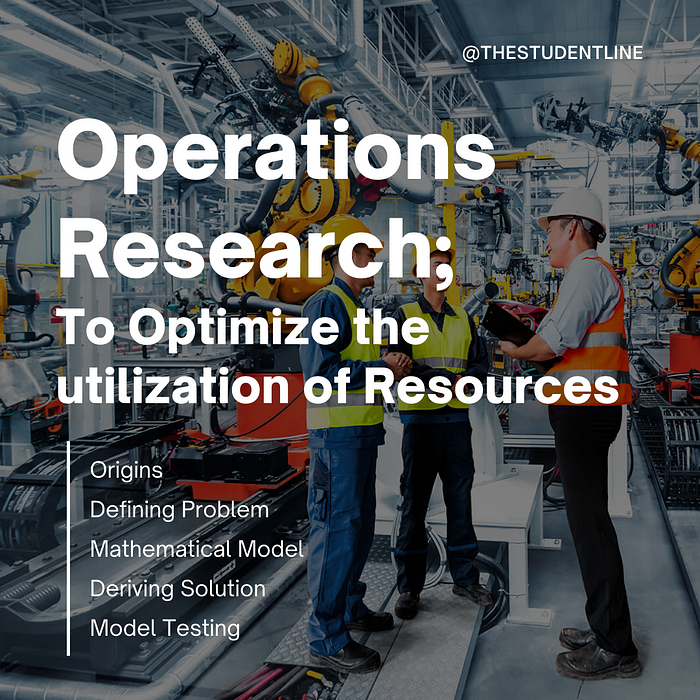Operations Research; To optimize the utilization of resources.

1.1 Origins of Operations Research
Operations Research and Management Science are used interchangeably, using mathematical and scientific approaches to solve Problems in the Corporate World. Since the Industrial Revolution, Businesses became more complex and larger in size which gave rise to more and more components in an organization. As a result, it became a problem to allocate the available resources within a business to the relevant activities. Problems led to the need for better ways to solve them, and the research activities conducted on operations provided businesses with an environment that can solve these problems. In other terms, Operations Research.
As the term says, “research” is done during the initial stages in order to identify and observe the problem carefully and also gather the required data in order to continue the research. Then a model (a mathematical model) is constructed in order to make it more understandable. Finally, to verify and confirm the true representation of this model on the problem, experiments are conducted.
These activities are done in OR in order to find the “best solution” for the problem we are looking at. In other terms, ‘an Optimal Solution’.
There are several areas of study under Operations Research,
- Linear Programming
- Integer Programming
- Non-linear Programming
- Dynamic Programming
- Network Analysis
- Queueing Theory
- Decision Analysis
- Game Theory
- Graph Theory
- Stochastic Programming
- Simulation
- Heuristics and Metaheuristics
- Multi-objective Optimization
- Robust Optimization, etc.
In this series, we will be mainly focusing on the first few areas.
Operations Research is conducted in several phases,
- Defining the Problem
- Formulating a mathematical model
- Deriving a solution
- Model Testing and Application
1.2 Defining the Problem
In order to solve a certain problem, it is required to accurately understand the problem first. Therefore, it is important to come up with a well-defined problem statement. Such a statement includes everything like the objectives of the actions to be performed, constraints or limitations during the course of action, alternative courses of action, and so on.
As mentioned before, to understand the problem accurately, all relevant data are gathered here. These data will also be important in upcoming steps such as when developing the Models, etc.
If you want the “right” solution, know the “right” problem.
1.3 Formulating a Mathematical Model
After defining the problems, here we take all the data and information collected to formulate a mathematical solution to solve the problem. Simply the problem is given a mathematical form, that is, by including mathematical symbols and numbers.
Decisions to be made that are quantitative are ‘Decision Variables’, the main measure tested along with the decision variables is the ‘Objective function’, and the constraints are shown as inequalities. The values in constraints and any coefficient values in function are found from the gathered data in the previous step.
1.4 Deriving a solution
Model is formulated, and now a solution can be derived. This is solved manually or using computational methods.
The solution is subjected to the constraints identified and found by optimizing the objective function. It represents an ideal solution to the problem. In OR terms we call it an ‘optimal solution’.
Finally, alternative courses of action are also looked into and the critical factors in the solution are identified by conducting a sensitivity analysis by changing values.
1.5 Model Testing and Application
Finally, the Model is tested and implemented.
To verify and confirm the true representation of this model on the Problem, experiments are conducted. There could be factors that may have not been included or incorrectly estimated, they are identified here. This process of continuous improvement to the model using real-world data helps to validate the model. This is also called Model Validation.
Now the model and solutions are used to improve business activities by solving the complicated problems it used to have.

Comments
Post a Comment